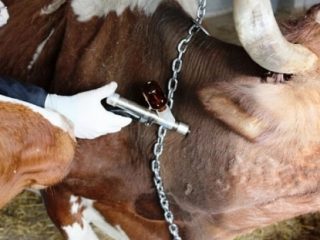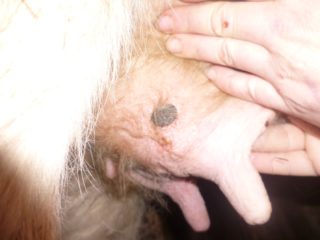Content
A whole milk replacer or milk replacer is a milk formula in dry or diluted form that fully corresponds to an animal's whole mother's milk. When cattle are bred on an industrial scale, the use of whole milk for feeding calves becomes unprofitable for farmers.
Therefore, many resort to CCM and thus preserve the health of animals and, as a result, their survival.
More about the benefits of milk replacer
Increases farmers' profits. 1 kg of powdered milk is cheaper than 1 kg of whole milk, while powdered milk cannot harm the health of calves, since its components are completely sterilized. The number of liters of whole milk per cow increases, and the calves are protected from various diseases.
Identical to natural milk. The composition of milk replacer completely replicates mother's milk, and also contains vitamins and microelements necessary in the first year of life. But, unlike whole milk, there are no infectious agents or bacteria.
It has a proven and stable composition. The cow may be sick or stressed - all of this will be reflected in the whole milk and transferred to the calves.They can also become infected or lack certain vitamins in their mother's milk. But the composition of milk replacer is verified and is always the same, regardless of the condition of the calving cow. Thanks to this, calves grow, develop normally and do not overeat. They are provided with a constant vitamin and mineral complex at any time of the year.
Not toxic to calves. CCM is easily absorbed and digested by calves because it is ideally adapted to their gastrointestinal tract. It does not contain pathogenic microflora - on the contrary, it contains an antidiarrheal antibiotic that protects calves from death in the first year of life.
Easy to prepare. Dry milk replacer is diluted according to the manufacturer's instructions and, as a rule, is easy to prepare.
Convenient to store. The main condition for storing milk replacer is a dry and cool place. Diluted milk replacer cannot be stored.
Has an affordable price. Therefore, milk replacer can also be used by private farmers who have small scale production.
How to properly feed calves on milk replacer
Newborn calves are fed maternal colostrum for five days. Cow colostrum is a thicker mixture than milk, which contains many useful substances for calves. It flushes their gastrointestinal tract, inhibits the growth of E. coli and launches the immune system. During this period, calves cannot be fed anything else. Colostrum is given up to ten times a day.
On the fifth day, cow's milk becomes thinner and similar to normal.
On the tenth day, replacer is administered - Be sure to follow the instructions and dosages from the manufacturer. If an animal refuses milk, this indicates that it is ill or weak; to understand the reason, consult a veterinarian. If the calf is not given its daily dose of water, it may die.
CCM is diluted only before use. You need to pour it into a clean container, scalded with boiling water. You cannot dilute milk replacer an hour before feeding or give it out a few hours after preparation - it will no longer have any benefit for calves.
How many liters of milk replacer do calves need?
The averages are approximately as follows:
- up to 7 liters of milk replacer per day in the first week after birth;
- 7 liters of milk replacer in the second week;
- 8 liters of milk replacer from the third to the fifth week;
- 6 liters of milk replacer from six months to a year
- 4 liters of milk replacer per full year and transfer to mixed feed.
Common mistakes when feeding milk replacer
Use of low-quality replacement products. For example, those that contain flaxseed - such milk replacers are cheaper than others, but they make the mixture thicker and astringent, which should not normally be the case.
Use of unsuitable replacement products. Formulas for newborn calves from 5-10 days are not digestible by calves that are already three weeks old and vice versa.
Incorrect temperature. If you use cool water to dilute milk replacer, the mixture will form lumps and will not dissolve completely, which means it will not release all its nutrients and vitamins. If you use too hot water, it will kill all the beneficial components contained in the substitute.
The ideal water for breeding is 50-55 degrees Celsius. Calves need to be fed when the mixture has cooled to 38 degrees. Cold mixture can cause colds in calves. For accurate measurements, it is better to use a thermometer.
Incorrect time mode. The drinking time should be the same - this is how the calves get used to feeding, and their gastrointestinal tract begins to secrete gastric juice at a certain time (a conditioned reflex is triggered). This is necessary so that the calves’ digestion is correct and harmonious, then the milk replacer will be absorbed in the body much better.
Measuring the mixture without a measuring cup. Dosage is important so that calves receive exactly the amount of nutrients that are necessary for their normal development. If you measure incorrectly, the viscosity of the milk will decrease or increase, and this will lead to problems with the gastrointestinal tract in the calf. In particular, to diarrhea.
Do not give calves water after feeding them with milk replacer. Milk replacers are more concentrated than mother's milk, so calves must have ready access to clean water to quench their thirst. If they do not drink water within 30 minutes of drinking, they may become poisoned.
Water calves from a bucket. Calves drink from a bucket in large portions, so the mixture is less absorbed by the gastrointestinal tract. As a result, this can lead to diarrhea. For feeding, it is better to use special teat drinkers to bring the feeding closer to the calves’ natural environment.
There are plenty of recipes and manufacturers of whole milk substitutes on the market. Pay attention to the composition, consult and be sure to follow the feeding technology.









